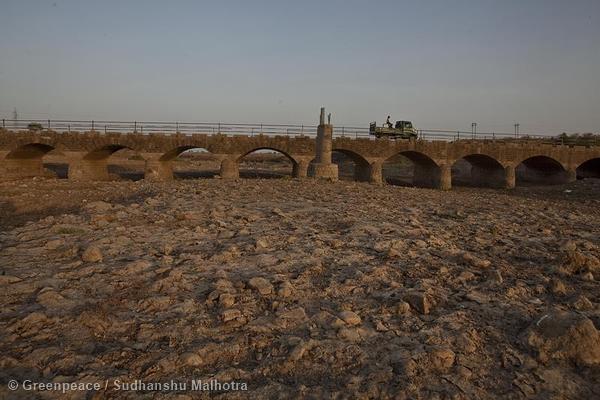India loses and China gains water through food trade
India is poised to lose its entire available water supply within 500 years if its current food export policy continues, a new method of calculating “virtual water” flow through trade has shown. China, in contrast, as a net importer of food, will not suffer major losses, according to the study.
Concerns over looming water scarcity in large tracts of Asia and Africa, especially due to climate change, have led researchers to develop new analytical approaches to quantify expected water losses. One such concept is ‘virtual water trade’, which refers to the water embedded in commodities. A country that exports wheat, for example, is in effect exporting the water needed to grow it.
A new algorithm developed by scientists at the Bangalore-based Council of Scientific and Industrial Research Fourth Paradigm Institute analysed the ‘virtual water trade’ of China and India.
Prashant Goswami, the chief scientist whose team developed the algorithm, told thethirdpole.net that a country’s food trade policy should ensure that there is no net loss of virtual water. This calls for smart virtual water management as the net balance can affect overall sustainability, he added.
The analysis, reported in Nature in March, says that China has managed its virtual water trade well in recent years by importing water intensive crops.
A 2014 report by an international team from the Beijing Forestry University came to a similar conclusion. China “significantly increased its net virtual water import from 7.02 cubic km in 1986 to 137.14 cubic km in 2009,” the scientists wrote.
The “dramatic rise’ was due to a major shift in food trade policy in 2001 – when China began to import more water intensive crops, such as grain and soya beans from US, Brazil and Argentina.
China’s main agricultural imports also include water intensive cotton, palm oil and poultry, while its main exports are vegetables, fruits and processed food, according to the Food and Agriculture Organization.
India, in contrast, is a net exporter of water through agricultural products and the new analysis claims: “This can lead to a slow but irreversible loss of water sustainability”.
India’s main exports are cereals, tea, coffee, cashew nuts and sugar, which all require vast amounts of water.
The analysis concludes that the net virtual water export alone can severely impact on a nation’s long-term water sustainability. Based on current levels, India could fail to meet its water requirements in less than 300 years and could run out of available water in less than 500 years.
The analysis was based on current annual rainfall and the authors concede that a loss of surface water due to low rainfall and drought caused byclimate change could reduce these time scales.
Rising water demands for agriculture and other sectors such as manufacturing, services and construction will pose additional constraints on water sustainability in the future.
Water shortages: India v. China
While India receives about 50% more annual rainfall than China, India’s overall water resources are only about 67% of China’s, the authors say.
Water supplies are dwindling in both countries, but India’s per capita water supply is lower than that of China. India’s per capita annual available water supply dropped from 4,098 m3 in 1961 to 1,519 m3 in 2010; while in China per capita water supply has fallen from 4,113 m3 to 2,051 m3 in the same period.
Water experts disagree on the significance of the new analysis.
Anna Forslund, programme manager at the Stockholm International Water Institute (SIWI), said the report “provides important information on how China and India are handling their growing water footprint — China by increasing its virtual water import and India that has lately moved into an export intensive regime”.
Forslund also said the findings “resonate” with earlier reports on the issue. Virtual water can be an important way for countries to ensure future water availability at national level, she said. “However future water availability will also depend on more efficient water management, a shift to more rain-fed agriculture as well as on how climate change will impact green water availability,” she added.
“It is clear that today’s water challenges will not be solved within the borders of one nation, and international cooperation and sharing water across borders will be of growing importance,” said Forslund.
Other experts question the validity of the new findings. Scientists at the International Water Management Institute (IWMI) in Colombo argue that although virtual water trade is a significant issue the authors’ treatment of the subject is perplexing.
Tushaar Shah, a senior fellow at IWMI, disagrees with the focus on ‘embedded water’ (water-weight of farm exports) rather than in the water consumed in agricultural production.
Since the virtual water export for India and China is less than 2% of the total water resources of the two countries, “it cannot raise any serious sustainability issue,” said Shah.
“Also, to suggest that virtual water exports can endanger sustainability over a 300 year period is preposterous because the agricultural economies as well as water use in India and China will change profoundly in unknown ways over such a long period,” he said.
Source: www.thethirdpole.net



comment 0